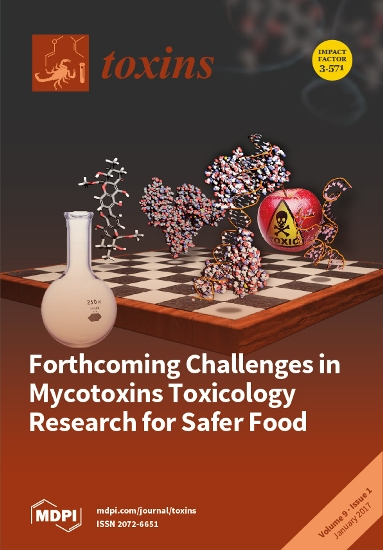Peanut pods are easily infected by aflatoxin-producing
Aspergillus sp.ecies from field soil. To assess the aflatoxin-producing
Aspergillus sp. in different peanut field soils, 344 aflatoxin-producing
Aspergillus strains were isolated from 600 soil samples of four agroecological zones in China (the Southeast coastal zone
[...] Read more.
Peanut pods are easily infected by aflatoxin-producing
Aspergillus sp.ecies from field soil. To assess the aflatoxin-producing
Aspergillus sp. in different peanut field soils, 344 aflatoxin-producing
Aspergillus strains were isolated from 600 soil samples of four agroecological zones in China (the Southeast coastal zone (SEC), the Yangtze River zone (YZR), the Yellow River zone (YR) and the Northeast zone (NE)). Nearly 94.2% (324/344) of strains were
A. flavus and 5.8% (20/344) of strains were
A. parasiticus. YZR had the highest population density of
Aspergillus sp. and positive rate of aflatoxin production in isolated strains (1039.3 cfu·g
−1, 80.7%), the second was SEC (191.5 cfu·g
−1, 48.7%), the third was YR (26.5 cfu·g
−1, 22.7%), and the last was NE (2.4 cfu·g
−1, 6.6%). The highest risk of AFB
1 contamination on peanut was in YZR which had the largest number of AFB
1 producing isolates in 1g soil, followed by SEC and YR, and the lowest was NE. The potential risk of AFB
1 contamination in peanuts can increase with increasing population density and a positive rate of aflatoxin-producing
Aspergillus sp. in field soils, suggesting that reducing aflatoxigenic
Aspergillus sp. in field soils could prevent AFB
1 contamination in peanuts.
Full article






